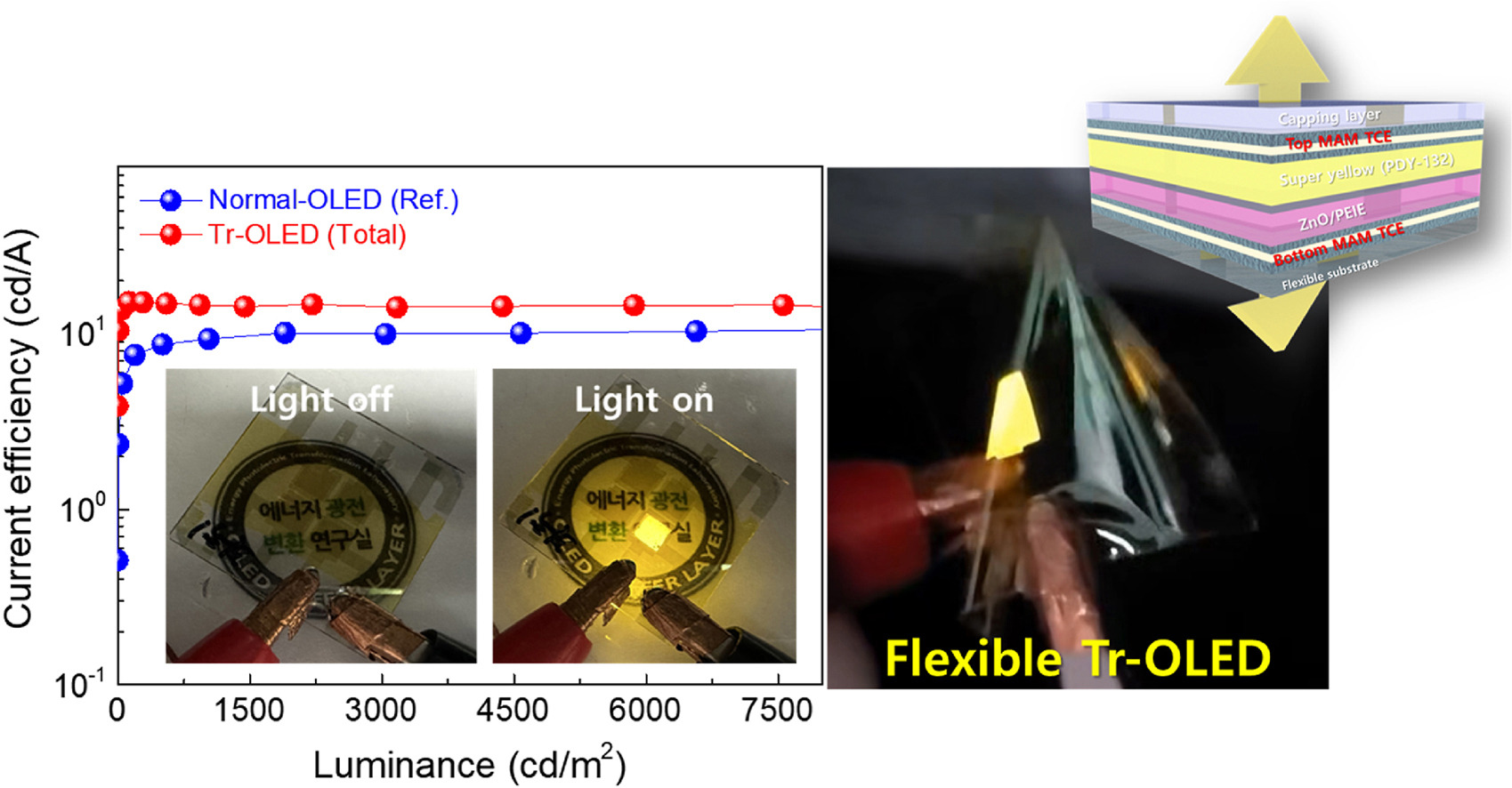Organic light-emitting diodes (OLEDs) typically exhibit a high contrast ratio, wide viewing angles, and low power consumption, enabling their widespread use in display and lighting applications. More recently, transparent OLEDs (Tr-OLEDs) that offer design versatility, seamless integration with the environment, and a minimized obstruction of the view have been developed and applied in various fields including display devices. Here, we report the fabrication of solution-processed, flexible Tr-OLEDs with an inverted device architecture. To ensure the high transparency of the Tr-OLEDs, oxide/metal/oxide (OMO)-structured electrodes, namely MoO3/Au/MoO3 (MAM), were used as both the transparent cathode and anode. The MAM electrodes exhibited a transmittance of ∼76% at a wavelength of 550 nm and a low sheet resistance of ∼15 ohm/sq. Moreover, the as-fabricated flexible Tr-OLEDs exhibited efficiency comparable to that of the bottom-emitting OLEDs with MAM and silver electrodes, thus proving the excellent charge carrier-to-light conversion within the device. Additionally, the flexible Tr-OLEDs were mechanically robust and exhibited excellent performance retention even up to a bending radius of 1 mm. Our findings suggest that MAM electrodes can be replace indium-doped tin oxide (ITO) for applications in large-area flexible transparent display and lighting.
https://doi.org/10.1016/j.orgel.2024.107022
